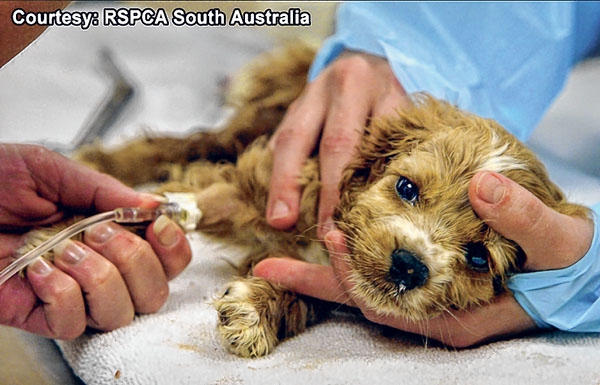Know more about canine parvovirus
08 Nov 2023 01:18:17

Gaiphungamliu Gonmeih
Pet owners across Manipur are worried over the spread of the deadly parvovirus across the State, as hundreds of dogs have reportedly been diagnosed with the virus. The rate of infection appeared to be on the risk in the last five years. Parvovirus has already affected an unknown number of dogs mostly below six months of age. There are also about half a dozen dog care centre in the State capital and sources claimed most of these centre have also witnessed a rise in such cases since the last few years.
The highly contagious disease will manifest in affected dogs in two forms: the intestinal one is characterized by vomiting, anorexia, weight loss and diarrhoea; the cardiac form is characterised by weakening of heart muscles of fetuses and young puppies. Depending on the stage the disease has advanced to, the chances of survival among young pups are fifty-fifty. Canine parvovirus can be found in almost any environment, but not every dog who comes into contact with the virus becomes infected. Several factors come into play in infection, including the immune status of the dog and the number of viruses the dog is exposed to.
If the combination of factors is just right and a dog become infected, a specific sequence of events starts as the virus attacks the body. Puppies and adolescent dogs are especially susceptible to parvovirus, and you should avoid bringing your puppy to public places where there is likely to be lots of virus (animal shelters and kennels) until after their vaccinations are complete.
How is parvovirus transmitted?
Parvovirus can infect unvaccinated dogs of any age, but commonly affects puppies between the age of six weeks and six months. Dogs get exposed by ingesting the virus, which is shed in the feces of infected dogs up to two weeks after the signs resolve. This virus is hardy in the environment and resistant to many household disinfectants, making it able to survive in the right conditions for up to a year. This makes it easier to spread even without any known direct contact with another dog.
This virus is highly contagious and spreads through direct contact with an infected dog or by indirect contact with a contaminate objects (eg., soil, shoes, clothing, cage floors, dog toys etc.). Your puppy is exposed to the parvovirus every time he sniffs, licks, or consumes infected feces. This virus can spread animal to animal, not to humans.
Insects and rodents may also serve as playing an important role in transmission of the disease. Active excretion of virus in faces can begin on third day after exposure, often before clinical signs appear, and may last for one to two weeks after onset of the disease.
Treatment, prevention and control of canine parvovirus
Dogs suspected or confirmed to have canine parvovirus should be immediately isolated from other dogs to prevent spread of infection. Treatment is based on supportive care, including fluids and electrolyte therapy, nutritional support, anti-emetics, and antibiotics. If not treated at the earliest possible, the animal dies. Unvaccinated dogs are at a higher risk. To prevent and control CPV, vaccination with multivalent live attenuated (MLA) is recommended.
Initial shot at 6 to 8 weeks of age, followed by a booster administered at 3 to 4 weeks till 16 weeks of age and revaccination every 1 to 3 years. CPV can remain viable in the environment for an extended period. So, puppies should not socialize with other dogs until they have completed their entire vaccination course. In a kennel, shelter, or hospital situation, cages and equipment should be cleaned, disinfected, and dried twice before reused. The same concepts can be applied to a home situation. Disinfectants can be applied outdoors with spray hoses, but disinfection will be less effective then, when applied to clean, indoor surfaces.
In a home situation, only fully vaccinated puppies (6, 8, and 12 weeks) or fully vaccinated adult dogs should be introduced into the home of a dog recently diagnosed with CPV enteritis. Booster vaccination of in-contact healthy dogs that are up-to-date on parvovirus vaccination is reasonable duration of immunity to CPV. The writer is a 3rd Year Student, BVSc, College of Veterinary Sciences and Animal Husbandry, Aizawl, Mizoram